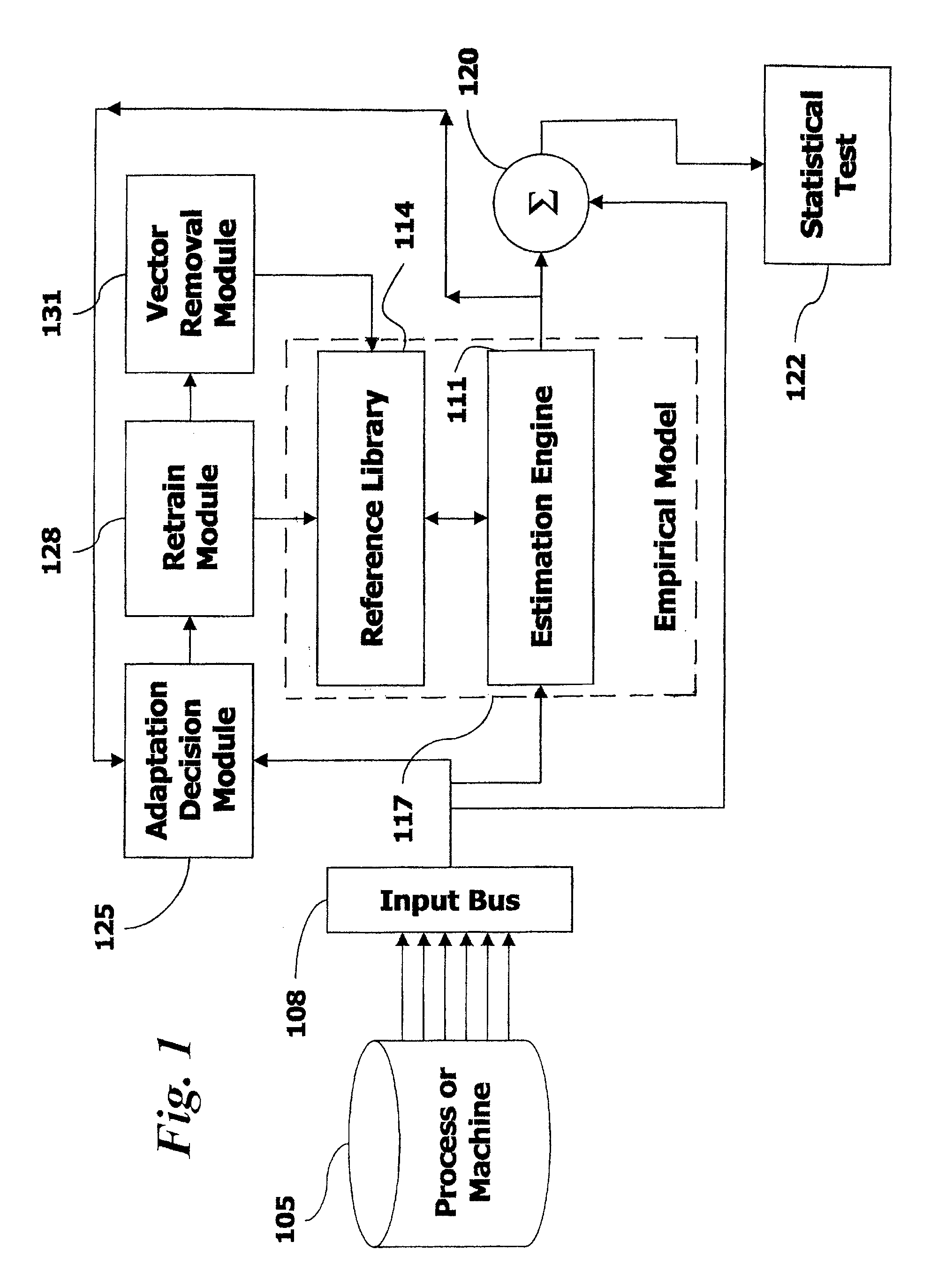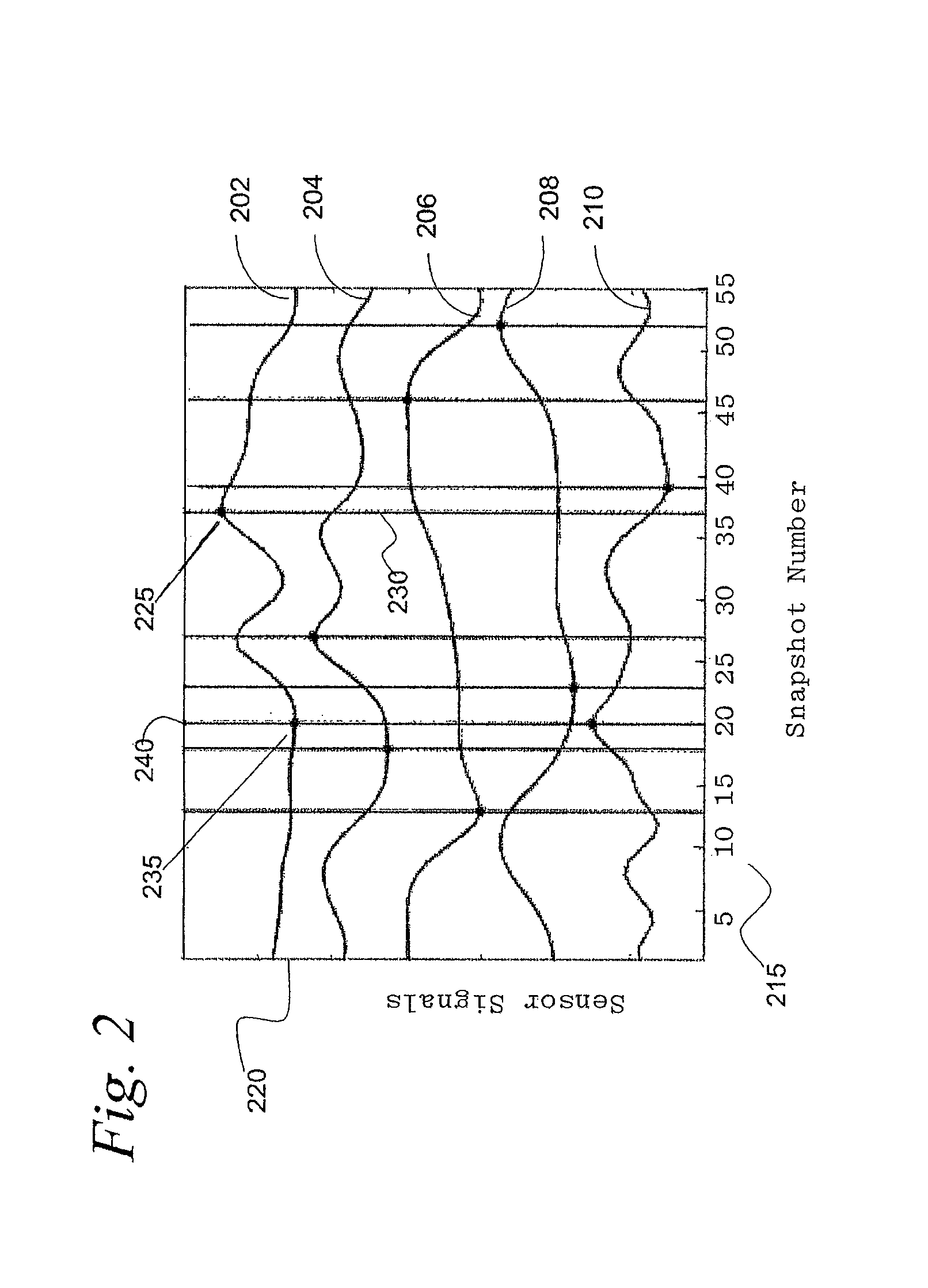Adaptive modeling of changed states in predictive condition monitoring
a predictive condition and state technology, applied in the field of monitoring machines, can solve problems such as failure to provide adequate warning to prevent unexpected shutdown, equipment damage, product quality loss or catastrophic safety hazards, and the greatest hurdle to successful implementation of empirical model-based surveillance systems
- Summary
- Abstract
- Description
- Claims
- Application Information
AI Technical Summary
Benefits of technology
Problems solved by technology
Method used
Image
Examples
Embodiment Construction
[0025]Turning to FIG. 1, a block diagram is shown of the inventive adaptive empirical model-based monitoring system. A process or machine 105 is instrumented with sensors for detecting various physical, statistical, qualitative or logical parameters of the process or machine operation. These are typically provided to the inventive system via an input bus 108, exemplified by a FieldBus type bus in a process control system in an industrial plant. The data representing the current state of the process or machine 105 is fed from input bus 108 to an estimation engine 111, which is coupled to a reference library 114 of past data representative of normal or acceptable states of operation of the process or machine. Together, the estimation engine 111 and the reference library 114 comprise the empirical model 117 that models the process or machine.
[0026]In standard monitoring mode, the sensor data from input bus 108 are also provided to a differencing engine 120 that is disposed to receive e...
PUM
 Login to View More
Login to View More Abstract
Description
Claims
Application Information
 Login to View More
Login to View More - R&D
- Intellectual Property
- Life Sciences
- Materials
- Tech Scout
- Unparalleled Data Quality
- Higher Quality Content
- 60% Fewer Hallucinations
Browse by: Latest US Patents, China's latest patents, Technical Efficacy Thesaurus, Application Domain, Technology Topic, Popular Technical Reports.
© 2025 PatSnap. All rights reserved.Legal|Privacy policy|Modern Slavery Act Transparency Statement|Sitemap|About US| Contact US: help@patsnap.com



